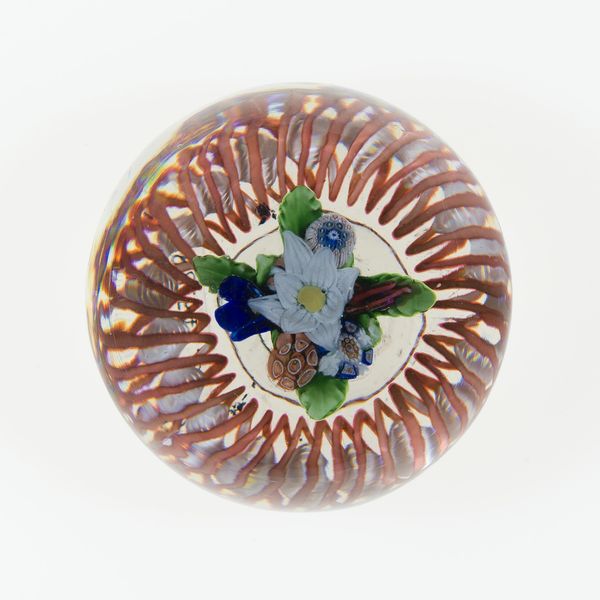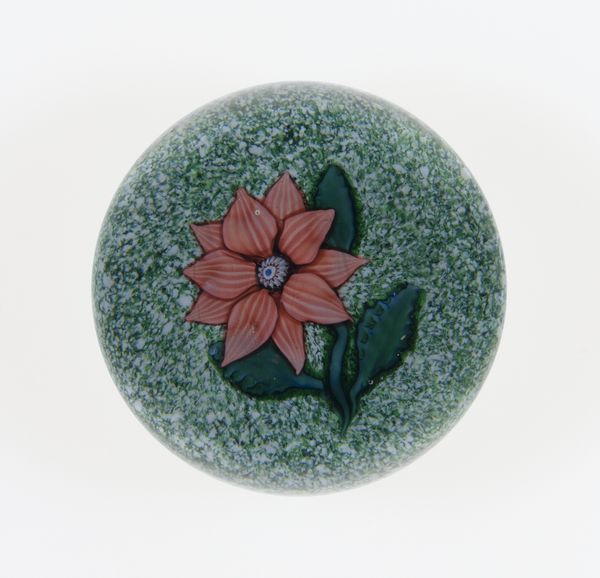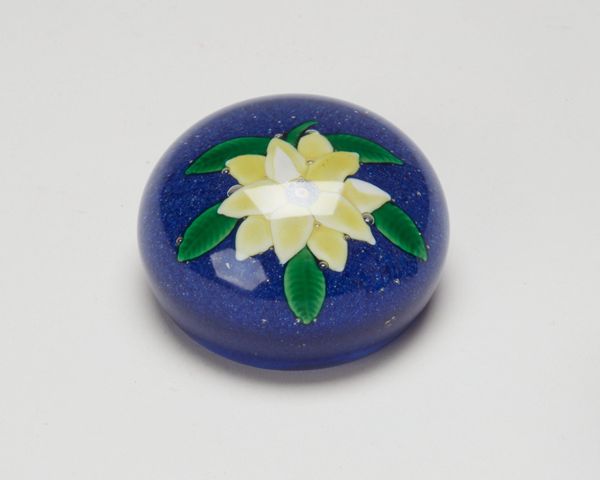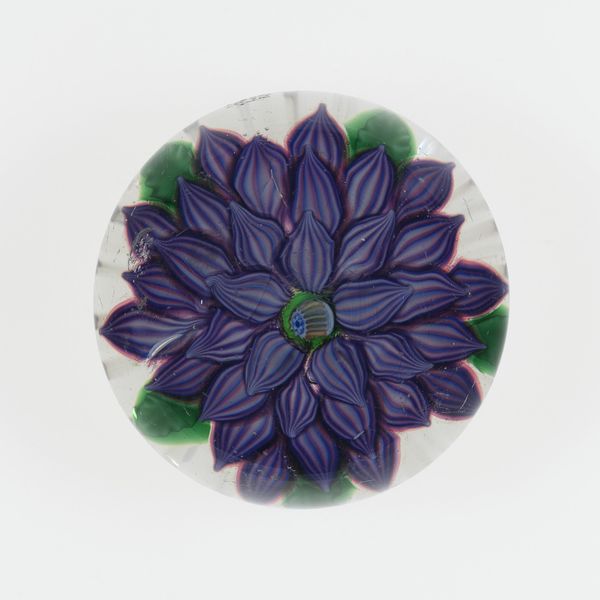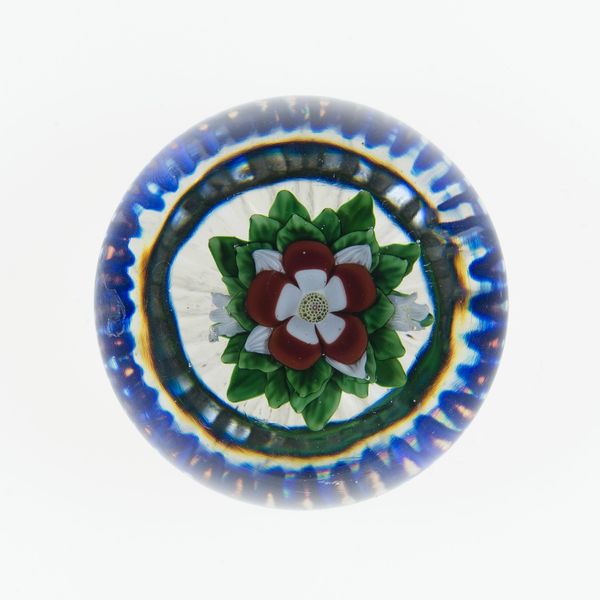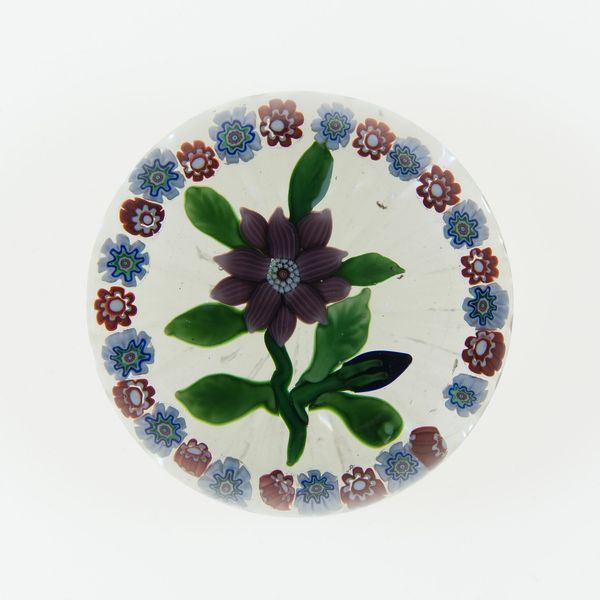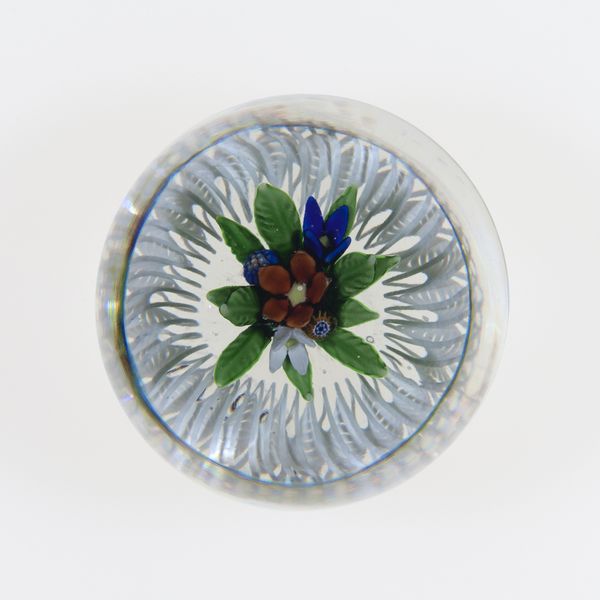
paper, glass
circular oval feature
enamel pin design
egg art
3d printed part
jewelry design
round design
paper
glass
framed image
ceramic
round circular shape
watercolour illustration
decorative-art
Dimensions: Diam. 6.7 (2 5/8 in.)
Copyright: Public Domain
Editor: This is a glass paperweight made by Compagnie de Saint Louis sometime between 1848 and 1855. I'm really drawn to the way the blue flower is encased; it feels almost like something preserved, or trapped. What strikes you most about this object? Curator: What stands out to me is the industrial context of its making. These weren't individual artists necessarily, but a company producing these objects, leveraging specialized glassmaking skills and techniques. Think about the labour involved. Editor: So it's not just about aesthetic value, but about the conditions of production? Curator: Exactly. Consider the specific techniques developed during the Industrial Revolution and their impact on the art market. It democratized access to beautiful objects, even if it was at the expense of craft traditions. How does that change your initial reaction? Editor: It makes me think about accessibility and how glassmaking, once perhaps a highly individualized skill, was changing because of industrial methods and affecting the circulation of art. Curator: Precisely. And beyond aesthetics, glass itself has a significant industrial function. We take for granted what it protects and enables. What is being magnified and valued here? A blue flower becomes a symbol, and so does the industrial capability surrounding it. Editor: I hadn't considered that the choice of materials and production reflects this intersection between art and industry. Curator: And consider how mass production alters how and why it’s consumed, altering perceived value along the way. Editor: This has completely changed how I look at the paperweight, seeing beyond the surface and thinking about the historical context. Thanks! Curator: Absolutely! It's about understanding the material world that informs our appreciation.
Comments
No comments
Be the first to comment and join the conversation on the ultimate creative platform.

